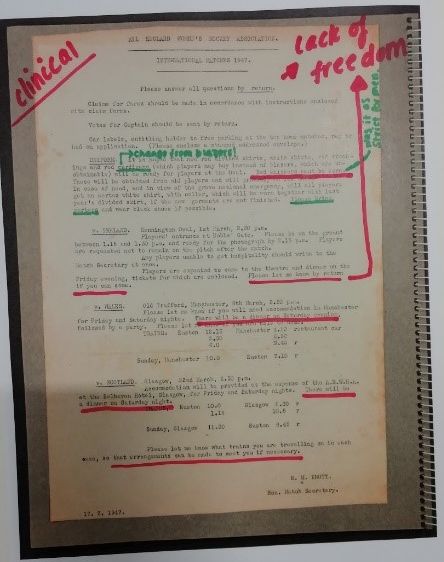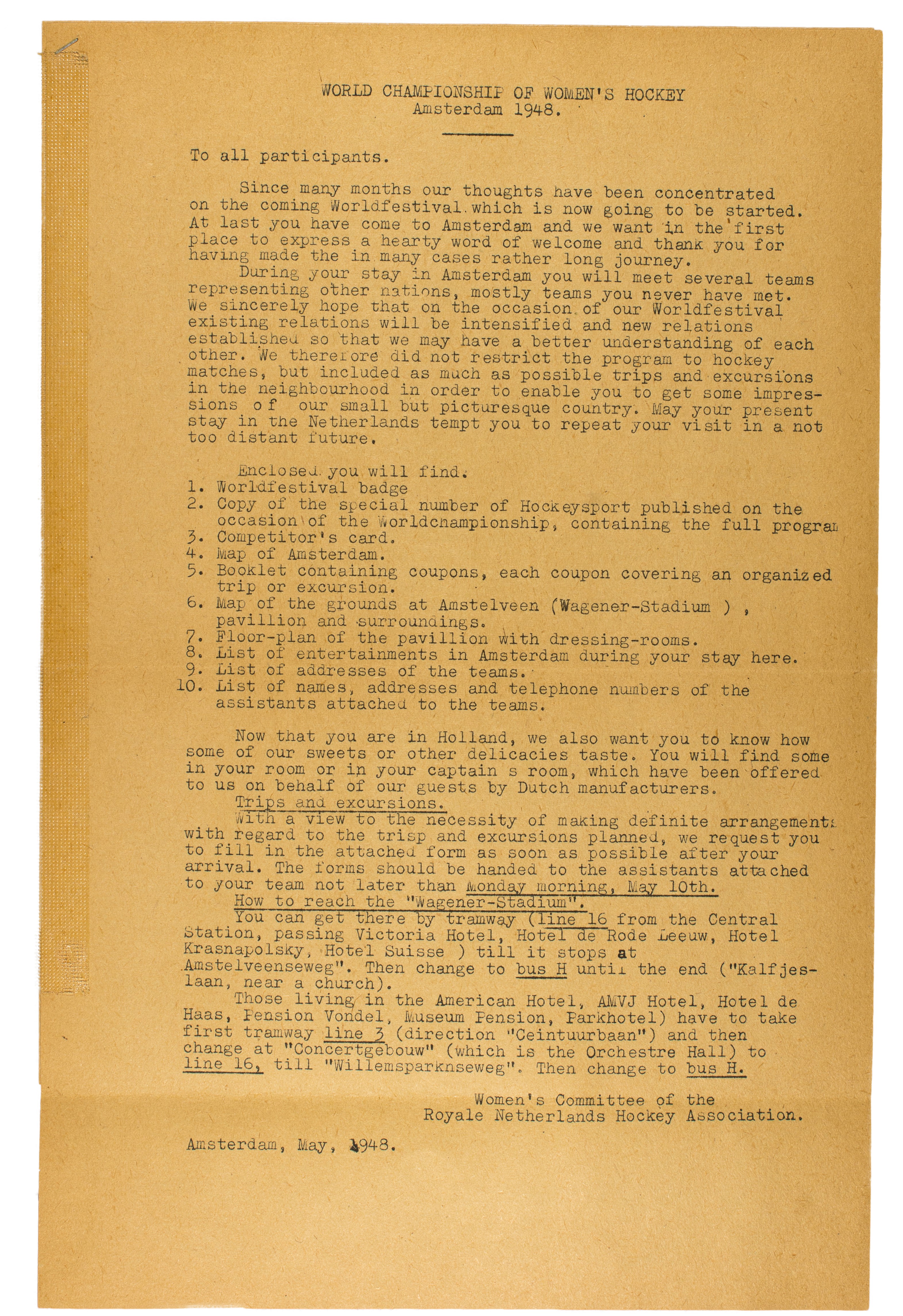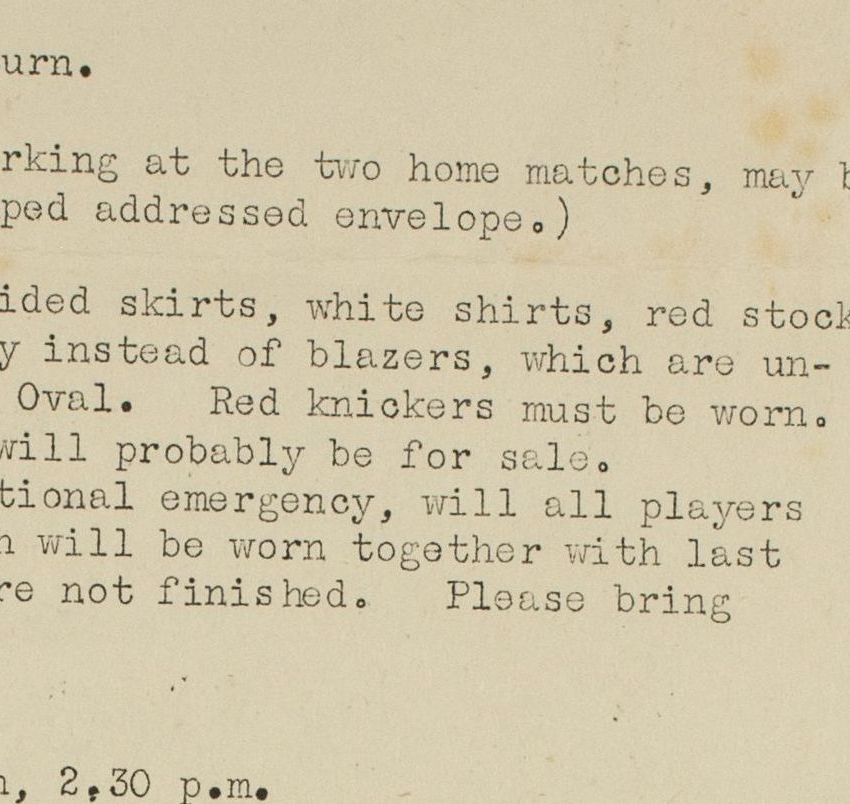Dr Sandra Daroczi and her students tackle feminism, gender and sport in hockey player scrapbooks.
With the FIFA Women's World Cup drawing to an end and Cori Gauff wowing the crowds on the Wimbledon grass, it is a fitting time to look at the evolution of women’s sports: how far have we come and how far do we still need to go?
The Library is a great place to look into this, with the All England Women's Hockey Association (AEWHA) Collection available for research and use during classes. With Lizzie Richmond’s help, we were able to look at pages from scrapbooks belonging to Mary Russell Vick (née de Poutron), who in 1947 was selected to play hockey for England, after having done so for the University of Oxford, Sussex, and the South. These pages fitted very well in our Gender and Politics class, which happened to be in the same week when Ada Hegerberg, the first female winner of the Ballon d’Or, was asked by the host of the awards ceremony if she can twerk… yet again sexualisation of a woman’s body took precedence over her professional success. The redeeming feature of the moment was the audience’s reaction of shock and disapproval, highlighting the fact that there is an increased awareness of how we relate to women’s bodies and what language we use to talk about it.

It is this issue of women’s bodies that students explored in great depth, looking at two pages from Mary Russell Vick’s scrapbook: the English team’s programme of international matches in February 1947, and the welcome letter for the World Championship of Women’s Hockey, held in Amsterdam in May 1948. In the 1947 programme, one of the most striking sentences was ‘red knickers must be worn’, making us wonder if equally stringent uniform rules were imposed in the men’s game. While the entire uniform was a combination of various red and white garments, we could not help but feel that the ‘red knickers’ were taking this too far, especially given other documents and photographs we looked at, clearly showing how non-revealing the hockey uniform was (non-revealing here could also easily be replaced by uncomfortable!).
The 1947 programme reflects the post-war atmosphere, underlining early on ‘the grave national emergency’. It is even more commendable to think that at this time women were able to organise and sustain a sports association, on top of their family and civic duties. These were events organised by women for women, in an attempt to start building a genealogy of women athletes.

In the 1948 letter, the organisers tried to combine the matches with other leisure activities: ‘We therefore did not restrict the program to hockey matches, but included as much as possible trips and excursions in the neighbourhood in order to enable you to get some impressions of our small but picturesque country.’ The students were struck by the inherent oxymoron between not wanting to restrict the programme and making sure that it was full with other prescheduled activities. The players could roam in Amsterdam (and further afield), as long as it was within the confines of the pre-established itinerary.
Fighting against the control exercised over women’s body has been at the forefront of feminist concerns for a long time. Famous women, including athletes, actors, musicians, and politicians have used their status to speak and act against such control and confinement. We have definitely come a long way since the ‘red knickers’ of 1947, but the fight is far from over.
